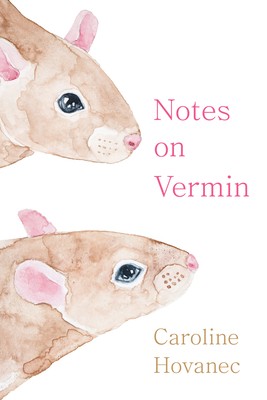
- We will send in 10–14 business days.
- Author: Caroline Hovanec
- Publisher: University of Michigan Press
- ISBN-10: 0472057200
- ISBN-13: 9780472057207
- Format: 15.7 x 22.7 x 1.2 cm, minkšti viršeliai
- Language: English
- SAVE -10% with code: EXTRA
Reviews
Description
Vermin--rats, cockroaches, pigeons, mosquitoes, and other pests--are, to most people, objects of disgust. And vermin metaphors, likening human beings to these loathed creatures, appear in the ugliest forms of political rhetoric. Indeed, vermin imagery has often been used to denigrate poor, foreign, or racialized people. Yet many writers have reclaimed vermin, giving new meaning to creeping rodents, swarming insects, and wriggling worms.
Notes on Vermin is an atlas of the literary vermin that appear in modern and contemporary literature, from Franz Kafka's gigantic insect to Richard Wright's city rats to Namwali Serpell's storytelling mosquitoes. As parasites, trespassers, and collectives, vermin animals prove useful to writers who seek to represent life in the margins of power. Drawing on psychoanalysis, cultural studies, eco-Marxism, and biopolitics, this book explores four uses for literary vermin: as figures for the repressed thought, the uncommitted fugitive, the freeloading parasite, and the surplus life. In a series of short, accessible, interlinked essays, Notes on Vermin explores what animal pests can show us about our cultures, our environments, and ourselves.EXTRA 10 % discount with code: EXTRA
The promotion ends in 22d.05:44:10
The discount code is valid when purchasing from 10 €. Discounts do not stack.
- Author: Caroline Hovanec
- Publisher: University of Michigan Press
- ISBN-10: 0472057200
- ISBN-13: 9780472057207
- Format: 15.7 x 22.7 x 1.2 cm, minkšti viršeliai
- Language: English English
Vermin--rats, cockroaches, pigeons, mosquitoes, and other pests--are, to most people, objects of disgust. And vermin metaphors, likening human beings to these loathed creatures, appear in the ugliest forms of political rhetoric. Indeed, vermin imagery has often been used to denigrate poor, foreign, or racialized people. Yet many writers have reclaimed vermin, giving new meaning to creeping rodents, swarming insects, and wriggling worms.
Notes on Vermin is an atlas of the literary vermin that appear in modern and contemporary literature, from Franz Kafka's gigantic insect to Richard Wright's city rats to Namwali Serpell's storytelling mosquitoes. As parasites, trespassers, and collectives, vermin animals prove useful to writers who seek to represent life in the margins of power. Drawing on psychoanalysis, cultural studies, eco-Marxism, and biopolitics, this book explores four uses for literary vermin: as figures for the repressed thought, the uncommitted fugitive, the freeloading parasite, and the surplus life. In a series of short, accessible, interlinked essays, Notes on Vermin explores what animal pests can show us about our cultures, our environments, and ourselves.

Reviews